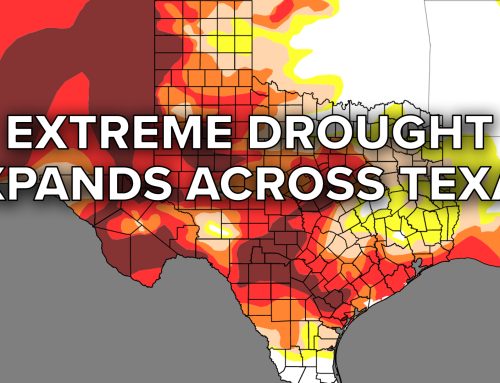Article by Kay Ledbetter – today.agrilife.org
DUMAS – “Cotton & Conservation” is the title of a new series of videos being developed by the Texas A&M AgriLife Extension Service and North Plains Groundwater Conservation District.
Dr. Jourdan Bell, AgriLife Extension agronomist in Amarillo, said she is excited about this new partnership that will report on cotton development and irrigation conservation at demonstration sites throughout the water district.
“We’ll use the video series to describe the growth stage of the cotton, any insect or disease pressure and report on irrigation, soil moisture and any management variables,” said Kirk Welch, North Plains Groundwater Conservation District assistant general manager, public outreach, Dumas. “This will help producers in the North Plains better manage their cotton in hopes of saving water while maintaining or increasing yield.”
The weekly video series will be posted on the North Plains Groundwater Conservation District Cotton and Conservation web page, https://northplainsgcd.org/cotton.
The total planted cotton acreage across the eight counties that comprise the North Plains Groundwater Conservation District has increased approximately 283,000 acres from 2013 to 2018. Of that, the irrigated cotton acreage has increased from 46,557 to 250,221 acres during this five-year period.
Bell said as cotton acreage has expanded into the northwestern corner of the Panhandle, it is important to account for weekly development of the cotton crop and evaluate the accumulation of growing degree days with respect to key growth stages for the region.
“What we have seen as cotton has progressed further north is that the development does not necessarily agree with growing-degree calendars from other cotton-producing regions,” she said.
Growing degree day accumulation and the cotton plant development is a standard across the globe for cotton, Bell said, because heat drives the development of the cotton plant.
To help producers stay on top of their crop, Bell created an accounting process for AgriLife Extension agents to record plant development and field conditions over each week at the six locations. Weather stations were set up at each location to monitor the daily temperatures.
Helping provide information for the project will be AgriLife Extension agriculture and natural resources agents Scott Strawn, Ochiltree; Mike Bragg, Dallam and Hartley; Marcel Fischbacher, Moore; Kristy Slough, Hutchinson; J.R. Sprague, Lipscomb; and a regional agronomy agent covering Dallam, Hartley, Sherman and Moore counties.
“This is a great opportunity to increase educational programming in cotton irrigation management as regional groundwater levels decline across the Texas Panhandle,” Bell said. “Where producers may be unable to meet the water demand for many crops, cotton is a viable alternative for northern Texas Panhandle irrigated acres.”
Due to variable precipitation patterns, irrigation is necessary to stabilize and optimize cotton production as with other irrigated crops, she said, but because cotton is drought-tolerant, it is poised to increase on dryland acres as seen in recent years.
Management strategies vary between irrigated and dryland production systems, so this educational programming can help increase profitability on dryland acres and allow producers to concentrate irrigation supplies to enhance the profitability of irrigated acreage, Bell said.
Since the northern Texas Panhandle is a short-season cotton production region, variety selection is a critical decision. Texas A&M AgriLife currently has five Replicated Agronomic Cotton Evaluations, or RACE variety trials, across the water district coordinated by Bell.
These provide an unbiased evaluation of key varieties positioned for the Texas Panhandle region under different environmental and management systems. These trials evaluate not only the yield potential of top varieties but also variety stability.
“The 2019 results will be especially important because we are able to evaluate cotton development under unfavorable planting conditions,” Bell said.
She explained the abundant rains and standing water have caused planting and seeding issues. These unfavorable conditions have already caused the loss of the planned field sites in Hutchinson and Ochiltree counties.
“These varieties have a shorter bloom period and are generally more determinant than full-season varieties,” she said. “As a result, earlier maturing varieties are often unable to recover from in-season stress, so monitoring their environment, available heat units and water needs is key to helping producers make educated decisions in their cotton production moving forward.”






